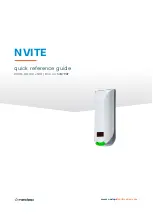
INSTALLATION AND OPERATING INSTRUCTIONS
Site cabling considerations
20 (66)
SKF Multilog On-line System IMx-16Plus
User Manual
Revision Letter A
2.4 Site cabling considerations
When routing cabling to the IMx-16Plus or the protective cabinet:
•
Route and secure them at regular intervals, to minimise cable vibration
•
Keep clear of high voltage equipment, their cables or strong magnetic fields
•
Avoid exposure to or protect against radiant heat
•
Choose a cable routing, that doesn’t obstruct access to the IMx
-16Plus
•
Avoid cable and sensor locations that interfere with routine maintenance
For cable/wire ends, bootlace ferrules or cord end terminals are recommended. The
wire end should have a maximum cross section/gauge of 1,5 mm² / 16 AWG and an
insertion length of approximately 10 mm.
Important safety warnings and guidance:
2.4.1 Sensor cabling
The IMx-16Plus can connect to the following sensor types:
•
Accelerometers (2-wire, constant current)
•
Voltage output sensors (2-wire), including externally powered accelerometers
•
4-20 mA outputs (2-wire), load resistor must be fitted at IMx input terminals
•
PT1000, temperature sensors (2-wire)
•
Speed sensors (2- or 3-wire)
If not otherwise specified (by a sensor supplier etc.) signal and similar wiring to the
IMx-16Plus should use shielded, twisted pair 2 x 0,5 mm
2
(FKAR-PG 1 x 2 x 0,50
DUE 4002 or equivalent), with minimum voltage requirement of 300 V.
Only remove any cabinet blind plugs where it is necessary to
accommodate a cable, an appropriate cable gland must then be used. Any
unused cable entries must remain closed off.
Refer also to the instruction manual: ‘Attaching Sensors for SKF Multilog
On-
Line Systems’. This provides examples of monitoring scenarios (typical
number and location of sensors) as well as important guidance regarding the
fitting of sensors.
















































